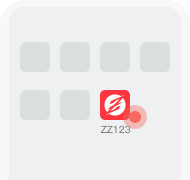
Richard Youngs
by Sylvie Harrison
Multi-instrumentalist from Glasgow Richard Youngs began releasing albums in the early '90s on various independent labels. His music ranges from the pure experimental, instrumental, minimal, and avant-garde through to folk-inspired songwriting and progressive rock. In songwriting mode, he is similar to Robert Wyatt, Anthony Moore, and in particular other fine acts from Glasgow John Martyn and the Incredible String Band. In his more experimental projects with Simon Wickham-Smith and Brian Lavelle, the cacophonous roar is closer in style to the '90s noise underground artists such as the Dead C, Sun City Girls, or White Winged Moth. The CDs Advent and Festival were released on Table of the Elements and other indie labels. Majora and VHF released his music solo and in settings with like-minded collaborators, such as Stephen Todd, and most commonly with Wickham-Smith. Richard Youngs has produced an expansive body of work and his recordings are diverse and cover many different areas of musical interest. There is a common thread in his material which links his recordings, however, and that is an uplifting defiant and playful attitude that gives the albums a common charm, in that they expose the artist as joyously indulging in the delights of a hermetic and musical world. Not to say that his music is obscured by any means; he has a network of publishers and followers the world over.
The Japanese label Meme released a CD by Richard Youngs in 1998 under the title of House Music which was not the exploration into dance music that one might expect, but in fact a series of candid recordings made with his father in their home. Taking the literal interpretation of the title, rhythmic door slamming, crescendos up and down the staircase, and all manner of music and noise generated in some days using the architecture as an instrument.
The Advent album from the early '90s is cited as a minimalist classic. That Youngs recorded it with only a kazoo and acoustic guitar does not suggest the complexity of the music contained and in many ways, this work navigates the territory occupied by American avant-garde minimalist masters Tony Conrad and Terry Riley, albeit with the laid-back ease of a post-punk autodidact.
Elsewhere, he made recordings that predate Autechre and Oval in that they exploit the de-construction of digital music systems, and the Radios series of CDs s this side of his interests, while at the other end of the spectrum he recorded folk-inflected mantras with the guiding light of the English folk revival, Shirley Collins and Bert Jansch moonlight recordings seem a guiding principle.
For fans of intimate music, Richard Youngs recorded many of his albums at home on portable recording equipment ranging in quality, but on record achieved beautiful and unique sounds from any range of instruments: kazoo, guitar, Casio organs, clock chimes, and synthesizers, kitchen implements, and small percussion. A good comparison would be to the Tall Dwarves whose home recording ethic started the lo-fi movement in New Zealand, or to the '80s Rough Trade and Creation artists such as Raincoats, My Bloody Valentine, and the Pastels. Like these artists, Richard Youngs' recordings are charming in their inventive and experimental use of recording equipment. Using limited resources, he archives colorful and eccentric results and often reaches highly emotive peaks such as on the album Sapphie, which is a mournful suite eulogizing a friend by that charming name. Although his time spent as a sonic experimenter could still be heard in the attention to detail that graced his releases, Sapphie's appearance in 1999 signaled a new dedication to folkier sounds for Youngs. He appeared next in 2001 in collaboration with Japanese guitarist and Acid Mothers Temple leader Makoto Kawabata and on a new solo outing, Making Paper. May arrived in 2002, followed the next year by Airs of the Ear; River Through Howling Sky was released in 2004. Rarely performing live, tours were forfeited in favor of his full-time profession as a writer and columnist for vegetarian cooking tips. Youngs was not entirely averse to live performance however and in 2005 he marked a notable appearance as a sideman as bassist for the first live appearance of the reclusive and often mythologized Jandek. The performance was ed for posterity on Glasgow Sunday. Later that year two new Richard Youngs recordings emerged, Naïve Shaman on Jagjaguwar and Patrick Rain Dance on VHF.
Multi-instrumentalist from Glasgow Richard Youngs began releasing albums in the early '90s on various independent labels. His music ranges from the pure experimental, instrumental, minimal, and avant-garde through to folk-inspired songwriting and progressive rock. In songwriting mode, he is similar to Robert Wyatt, Anthony Moore, and in particular other fine acts from Glasgow John Martyn and the Incredible String Band. In his more experimental projects with Simon Wickham-Smith and Brian Lavelle, the cacophonous roar is closer in style to the '90s noise underground artists such as the Dead C, Sun City Girls, or White Winged Moth. The CDs Advent and Festival were released on Table of the Elements and other indie labels. Majora and VHF released his music solo and in settings with like-minded collaborators, such as Stephen Todd, and most commonly with Wickham-Smith. Richard Youngs has produced an expansive body of work and his recordings are diverse and cover many different areas of musical interest. There is a common thread in his material which links his recordings, however, and that is an uplifting defiant and playful attitude that gives the albums a common charm, in that they expose the artist as joyously indulging in the delights of a hermetic and musical world. Not to say that his music is obscured by any means; he has a network of publishers and followers the world over.
The Japanese label Meme released a CD by Richard Youngs in 1998 under the title of House Music which was not the exploration into dance music that one might expect, but in fact a series of candid recordings made with his father in their home. Taking the literal interpretation of the title, rhythmic door slamming, crescendos up and down the staircase, and all manner of music and noise generated in some days using the architecture as an instrument.
The Advent album from the early '90s is cited as a minimalist classic. That Youngs recorded it with only a kazoo and acoustic guitar does not suggest the complexity of the music contained and in many ways, this work navigates the territory occupied by American avant-garde minimalist masters Tony Conrad and Terry Riley, albeit with the laid-back ease of a post-punk autodidact.
Elsewhere, he made recordings that predate Autechre and Oval in that they exploit the de-construction of digital music systems, and the Radios series of CDs s this side of his interests, while at the other end of the spectrum he recorded folk-inflected mantras with the guiding light of the English folk revival, Shirley Collins and Bert Jansch moonlight recordings seem a guiding principle.
For fans of intimate music, Richard Youngs recorded many of his albums at home on portable recording equipment ranging in quality, but on record achieved beautiful and unique sounds from any range of instruments: kazoo, guitar, Casio organs, clock chimes, and synthesizers, kitchen implements, and small percussion. A good comparison would be to the Tall Dwarves whose home recording ethic started the lo-fi movement in New Zealand, or to the '80s Rough Trade and Creation artists such as Raincoats, My Bloody Valentine, and the Pastels. Like these artists, Richard Youngs' recordings are charming in their inventive and experimental use of recording equipment. Using limited resources, he archives colorful and eccentric results and often reaches highly emotive peaks such as on the album Sapphie, which is a mournful suite eulogizing a friend by that charming name. Although his time spent as a sonic experimenter could still be heard in the attention to detail that graced his releases, Sapphie's appearance in 1999 signaled a new dedication to folkier sounds for Youngs. He appeared next in 2001 in collaboration with Japanese guitarist and Acid Mothers Temple leader Makoto Kawabata and on a new solo outing, Making Paper. May arrived in 2002, followed the next year by Airs of the Ear; River Through Howling Sky was released in 2004. Rarely performing live, tours were forfeited in favor of his full-time profession as a writer and columnist for vegetarian cooking tips. Youngs was not entirely averse to live performance however and in 2005 he marked a notable appearance as a sideman as bassist for the first live appearance of the reclusive and often mythologized Jandek. The performance was ed for posterity on Glasgow Sunday. Later that year two new Richard Youngs recordings emerged, Naïve Shaman on Jagjaguwar and Patrick Rain Dance on VHF.
單曲



















